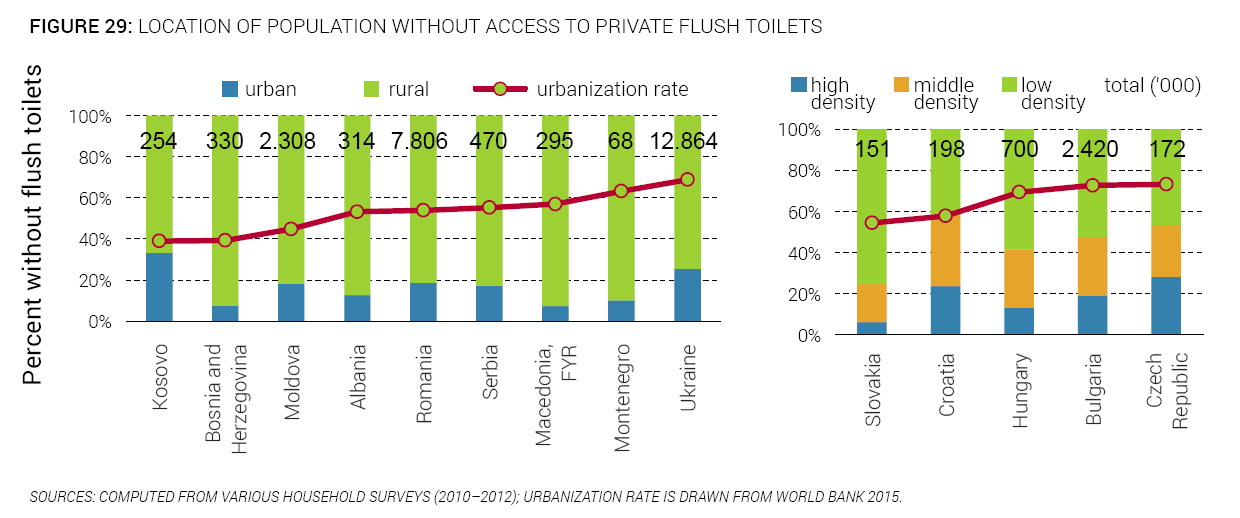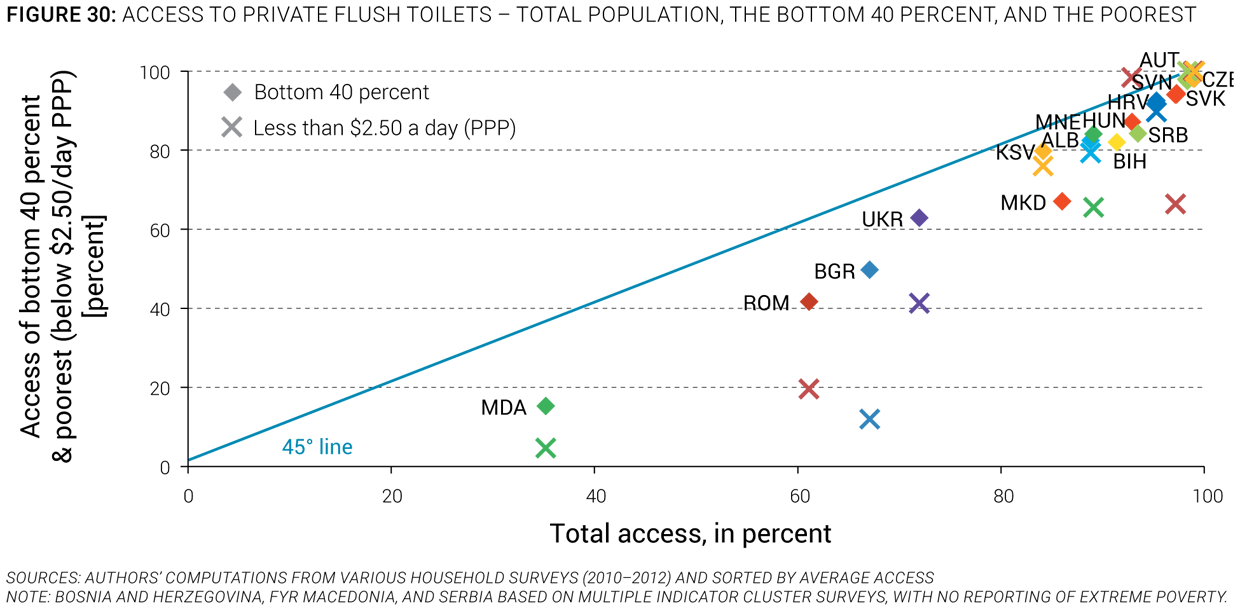B. Sanitation and Sewerage
69. Almost 80 percent of the population in Danube watershed countries report using a flush toilet in their dwelling, yet only 66 percent are connected to public sewer networks. Although progress has been made in the region since 2000 in increasing the coverage of the population with connection to sewers, changes are mostly visible among EU and EU-candidate countries (Figure 27). For Moldova and Ukraine, access to public sewers was already high 15 years ago due to the importance devoted to wastewater collection in the Former Soviet Union, but has been stagnating since.

70. The difference between access to flush toilets and public sewers is largest in Bosnia and Herzegovina, Croatia, and Montenegro (see Figure 28). Comparisons between access to flush toilets and sewers need to be made with the caveat that statistics on access to flush toilets are derived from household survey data and include only those with a private toilet in their dwelling, and statistics on access to public sewers are reported by national authorities and include households that share a toilet, while excluding those that have other safe means of excreta disposal, such as septic tanks.

71. Even more than piped water supply, lack of access to private toilets is most prevalent in rural areas or areas with low population density. Moldova has the lowest reported coverage of private toilets by the rural population (7 percent), but Bulgaria, Romania, and Ukraine also report rural access statistics below or just above 40 percent. In terms of absolute numbers, most of the population without access to private toilets is located in rural areas; only in Croatia and Kosovo are those without access distributed in almost equal proportion, as shown in Figure 29. In terms of sheer numbers, rural Moldova and Ukraine together account for slightly more than half of the population that does not have access to private toilets within the countries of the Danube watershed (51 percent). With the addition of Romania, almost 80 percent of the total number of residents without access to private toilets can be found in these three countries. Also, Bulgaria’s rural population is largely uncovered, contributing more than 5 percent to the total percent of those not covered with private toilets in countries of the Danube watershed.

72. Less than 20 percent of the poorest and less than half of the bottom 40 percent have access to a private toilet in Bulgaria, Moldova, and Romania. The low access—on average and for poorer segments of the population—is particularly striking in Bulgaria, which performed significantly better on piped water and is much more urbanized compared to the other two countries (73 percent compared to 45 percent in Moldova and 54 percent in Romania) (Figure 30). Low access by the poor in Bulgaria is also mirrored by the low access to improved sanitation by Roma, outlined in Figure 26, above.


